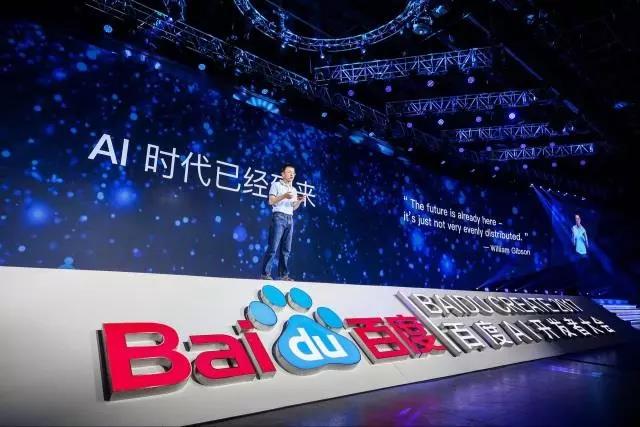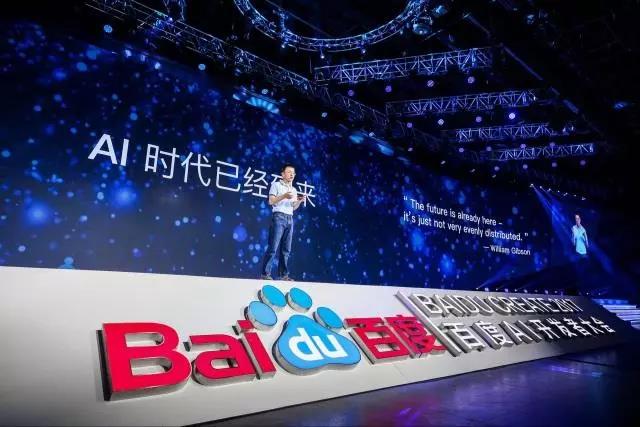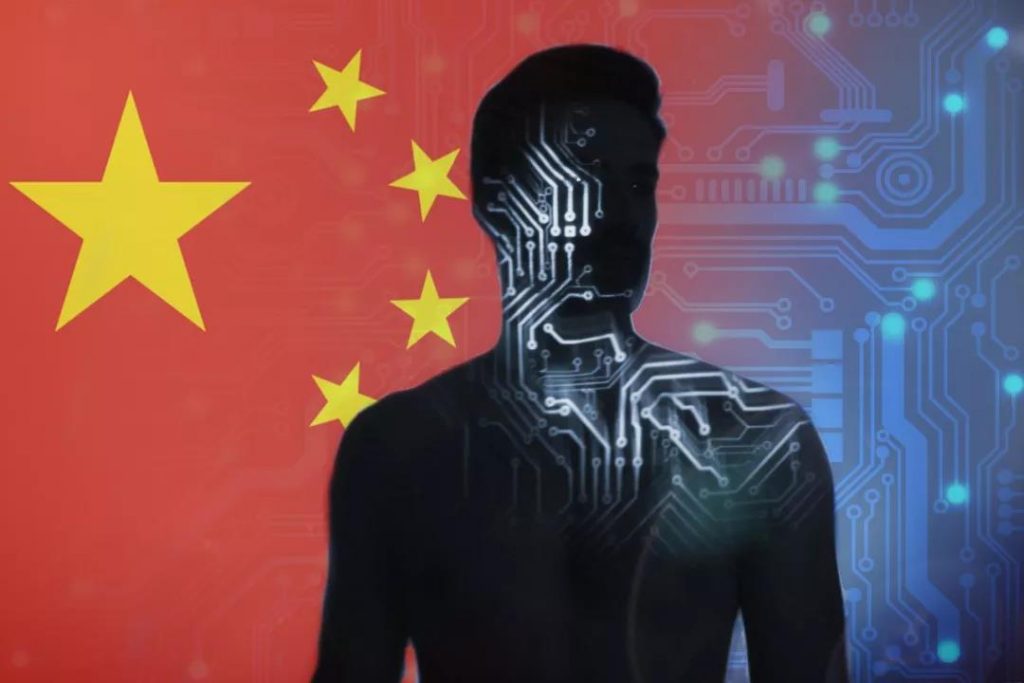
By Edward Tse | The WorldPost
October 19, 2017
SHANGHAI — If all goes as planned, China hopes to be the world leader in artificial intelligence by 2030. If successful, Beijing’s “moonshot” initiative – recently unveiled by the government – has the potential to be a game-changer not just for Chinese society but for global geopolitics as well.
My bet is that China will indeed reach its goal over the next decade, in part because of how far it has already come. While so much of the world today lacks clear direction, China has an edge in its ability to combine strong, top-down government directive with vibrant grassroots-level innovation.
Beyond this, China has an abundance of data to train AI-learning algorithms because of its huge population of Internet users – more than 700 million. China’s thriving mobile Internet ecosystem also provides a test bed for AI researchers to collect and analyze valuable demographics and transactional and behavioral big data and to conduct large-scale experiments at a much higher level than foreign counterparts.
This combination places Beijing in a unique position to dominate AI in just over a decade. It would be imprudent to expect otherwise. To understand why, look no further than the country’s current technological advancements.
China is investing in AI at the local level
Today, a number of local governments in China are offering financial incentives to encourage AI-related innovations. With the government’s assistance, Guizhou, one of the poorest provinces in the country, has become known as China’s “big data hub.” Major Internet companies such as Apple, Alibaba, Tencent and Qualcomm have set up new big data centers in the province, in large part due to this initiative. And in 2016, government data reported a 10.5 percent growth in Guizhou’s gross domestic product, one of the highest GDP increases among China’s provinces and municipalities.
Another example is the municipality of Chongqing. It was one of the first municipalities in China to establish a bureau to support local AI development. In May, Chongqing partnered with Baidu, a local search engine, to foster AI and big data. Elsewhere in China, Xiong’an New Area, a newly established district near Beijing, and Guangdong-Hong Kong-Macau Greater Bay Area, a city cluster, have also incorporated AI in their development plans as a key economic growth engine.
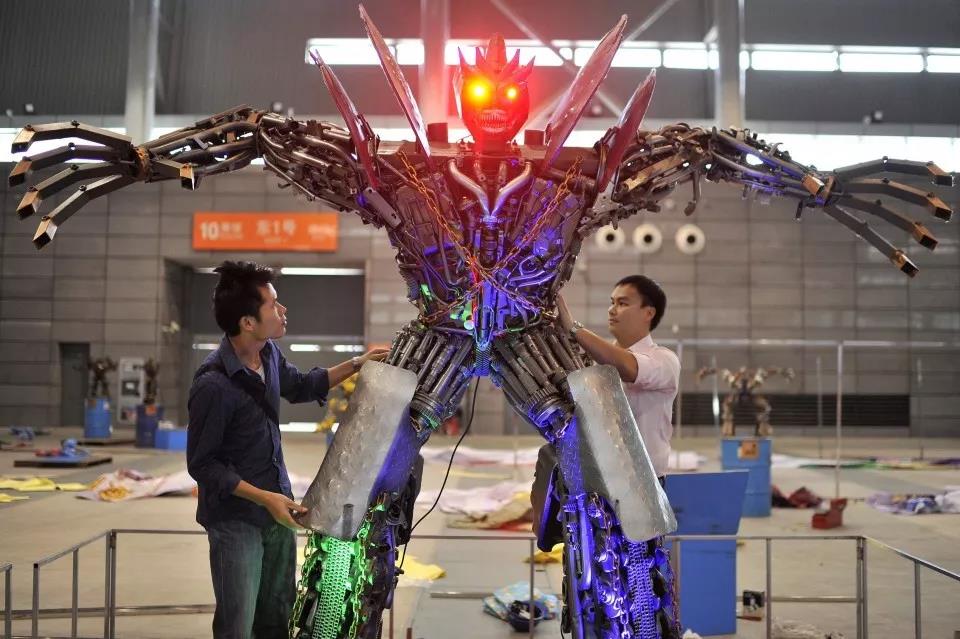
Workers test the functions of a giant robot as they set up a robot exhibition in Hefei, Anhui province. Sept. 26, 2013. (Reuters/)
China is inspiring tech to prioritize AI
The Chinese government’s favorable policies have inspired innovations across a wide range of tech players in the country. Leading Internet giants such as Baidu, Alibaba and Tencent, rising start-ups like iCarbonX and SenseTime, as well as “unicorns” – companies that have reached $1 billion valuation – like Didi Chuxing and Xiaomi are either adopting AI technology already in their operations or investing in it.
Baidu, for example, has shifted its company strategy from “mobile-first” to “AI-first.” Some of its initiatives include DuerOS, a conversational AI system that can be integrated into smart devices such as speakers, televisions and refrigerators; Project Apollo, an open source platform for the research and development of autonomous vehicles; and Baidu Brain, an AI platform with 60 different AI-enabled services. Its rival Tencent has also established its own AI lab, which developed the software that famously defeated high-ranking Japanese “Go” player Ryo Ichiriki earlier this year.
Additionally, Chinese health care start-up iCarbonX is building a digital “ecosystem” using AI technology to collect users’ biological and psychological data, provide personalized health analysis and predict users’ health status. And SenseTime, a Chinese AI start-up founded in 2014, focuses on innovative computer vision and deep learning technology. In July, SenseTime claimed it had raised the largest single round investment in AI globally at $410 million.
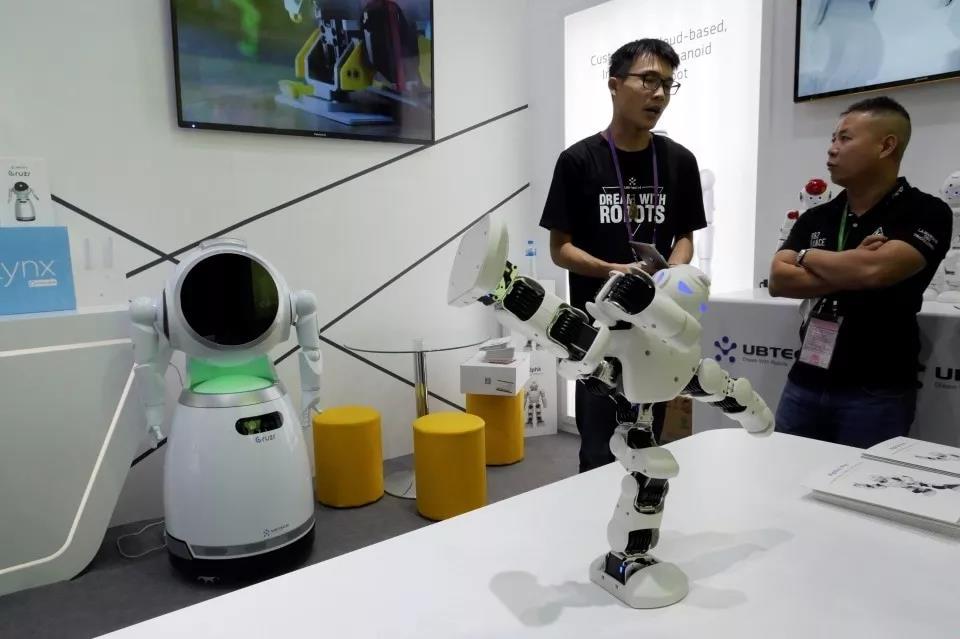
Alpha1 Pro, a humanoid robot for entertainment and education, at the Canton Fair in Guangzhou, China. Oct. 16, 2017. (Venus Wu/Reuters)
Still, there are some significant gaps to close before China becomes the world leader in AI. According to a recent AI report from Tencent Research Institute, the number of AI companies in China lags behind those in the United States, especially in the areas of core components and processes. China still falls short of the U.S. when it comes to new ideas and research related to AI but appears to have the upper hand in the application and implementation of these AI technologies.
Another potential challenge is geopolitics. According to an unreleased Pentagon report cited by Reuters, the U.S. government views Chinese investments in American AI start-ups as a potential threat to national security. As a result, the U.S. wants to scrutinize cross-border investment in sensitive AI technologies. On top of that, the Trump administration has proposed a 10 percent cut to the National Science Foundation’s spending on “intelligent systems.” This could present potential opportunity for China, through strong government support and financial incentives, to attract U.S. talent to set up AI labs and conduct pilots in China.
China has some work to do before it successfully harnesses the potential of AI. But it has the resources and talent to reach its goal – and now it has the political will to make it a national priority. That combination will be hard to beat.
This was produced by The WorldPost, a partnership of the Berggruen Institute and The Washington Post.
Edward Tse is the founding chief executive of the consulting firm Gao Feng Advisory Company. He has worked with the World Bank, the Asian Development Bank and the Chinese government on state-owned enterprise reform.

